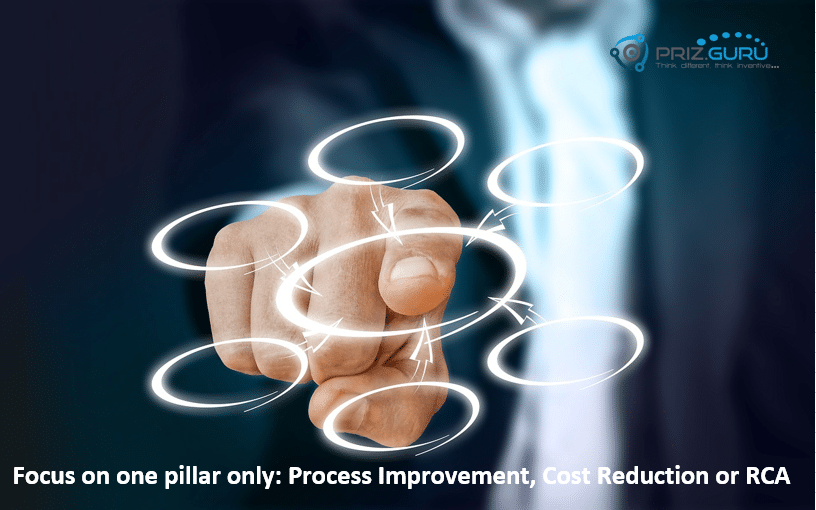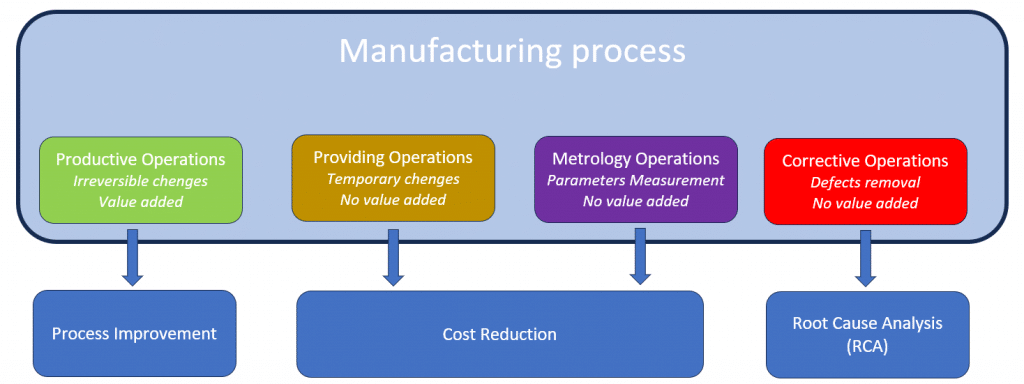Engineering work is built on three essential pillars: process improvement, cost reduction, and root cause analysis. Engineers should dedicate their thinking to a specific and measurable target, use thinking tools and resources, and recognize and value engineering thinking. The PRIZ Innovation Platform offers tools for engineering thinking, including Process Functional Modeling, 40 Inventive Principles, and Effective Brainstorming. Engineers should focus on improving only those operations that increase the value of the product, remove all operations that do not increase the value of the product, and understand the origin of defects and eliminate them.

What does an engineer do? What is the value that justifies a corporation paying them? Perhaps they increase yield, reduce defects, or improve reliability. This approach is incorrect. The essential functions of an engineer include: organizing and participating in meetings, reading and writing emails, specifications, instructions, and other documents, collecting and analyzing data, and creating PowerPoint presentations. Additionally, they may drink coffee and tea, participate in team-building activities, and engage in other small tasks. However, the most critical function of an engineer is thinking. Although a corporation provides everything an engineer needs, including an ergonomic workstation, computer, software, production and analytical equipment, and training, engineering thinking remains outside of the scope of the corporation. It is a paradox.
How to facilitate an engineer’s thinking? Here are three points to consider:
As an engineer, it is important to have a clear and measurable goal that defines your expected contribution to the company’s success and estimates the actual value of your work.
The three pillars of engineering work:
Rather than asking an engineer to keep everything in mind or think about nothing at all, it is best to ask them to dedicate their thinking to one of the pillars at a time.
Process improvements refer to any engineering activity aimed at enhancing the effectiveness of a process. The goal of process improvement is to increase the value of the process while boosting the company’s revenue. This makes both the goal and progress measurable and manageable. An engineer can measure the improvement in the process by looking at the rise in the production yield. For example, setting a goal of a 0.3% yield increase by the end of the year can help an engineer focus on a specific direction – continuous process improvement.
The engineering goal of process improvement is to increase the value of the process.
Cost reduction is an engineering activity that aims to make the production process economically viable by reducing the amount of money a company spends. We can achieve that by reducing the manufacturing cost – the expenses necessary to make the product. An engineer can set a goal to reduce the cost of a particular operation or the entire manufacturing process, which can be measured and managed. For example, setting a target of a 3-5% expense reduction for a specific operation by the end of the year helps an engineer focus on process cost reduction.
The goal of a cost-reduction engineering effort is to increase the value of money.
Root cause analysis (RCA) is an engineering activity aimed at reducing uncertainty in the production process and understanding why the process fails to produce an expected product. The goal of RCA is to identify the reason for a failure and use it as an opportunity for development. This can be achieved by setting a goal to reduce the number of failures. For example, setting a goal to reduce the failure rate by 10% by the end of the year will encourage engineers to focus on process improvement.
The goal of RCA in engineering is to identify opportunities for process development.
Engineers always use problem-solving tools, but unfortunately, the most popular tool is “guessing”. People often enter a conference room and start playing a guessing game. Would you agree that a medical doctor uses “guessing” during your surgery? I’m not sure. You would prefer that the doctor have relevant skills and all the necessary instruments.
Engineers are no different from medical doctors and should have the necessary skills and tools. Professional engineering thinking requires creative thinking tools and engineering work should be supported with training and the availability of these tools. We previously discussed these aspects in our article, “An Unskilled Problem Solver is Dangerous“.
Using creative thinking tools is essential for engineering thinking, and guessing should be at the bottom of your problem-solving toolbox. Guessing simply wastes time and money, while problem-solving is not a game but a science.
At PRIZ Guru, we offer the PRIZ Innovation Platform, which supplies engineers with all the necessary tools for engineering thinking.
When it comes to solving a specific problem, it’s not always clear how many tools are needed or which ones should be used. Similarly, asking when a hammer should be used is not the right question to ask. A hammer can be used for both destruction and creation, from breaking walls to creating beautiful sculptures. Use a hammer when you need to add weight and strength to your hand. When it comes to improving your intellectual capacity, turn to creative thinking tools instead. For more information on this approach, we recommend reading “The Art of Engineering Thinking with the PRIZ Platform.”
Sometimes, a small set of tools can be all that’s needed to solve a problem, as long as an engineer knows how to use them professionally. We suggest using a variety of tools, each suited to a different aspect of engineering work.

Start with Process Functional Modeling (PFM), an excellent tool for describing and understanding your process. By following PFM, you can make informed decisions regarding different operations. The power and advantages of PFM are described in the articles “Process Functional Modeling with the PRIZ Innovation Hub” and “Unlock the Power of Process Functional Model”.
The platform will automatically summarize your analysis and provide recommendations for different operations. The typical result is described in the article “Process Functional Modeling Summary”.
Since your engineering activity is focused on process improvement, it is important to focus only on productive operations improvements. Productive operations provide irreversible changes and increase the product’s value.
Continue your work using 40 Inventive Principles and Effective Brainstorming – these tools will help you generate innovative solutions.
Takeaway: Focus on improving only those operations that increase the value of the product.
Engineers working on cost reduction should start with a PFM analysis, similar to the process improvement described in the previous clause. The main difference is that engineering thinking should be focused on eliminating operations that do not add value to the product, such as providing operations and metrology operations.
Takeaway: Remove all operations that do not increase the value of the product
Engineers working on process improvements should focus on eliminating defects. They should start with PFM and concentrate on corrective operations because their original purpose is to fix imperfections in other operations.
Takeaway: Understand the origin of the defects and eliminate them.
What did you think of our article? Do you have any tips we may have left out? Let us know in the comments below!